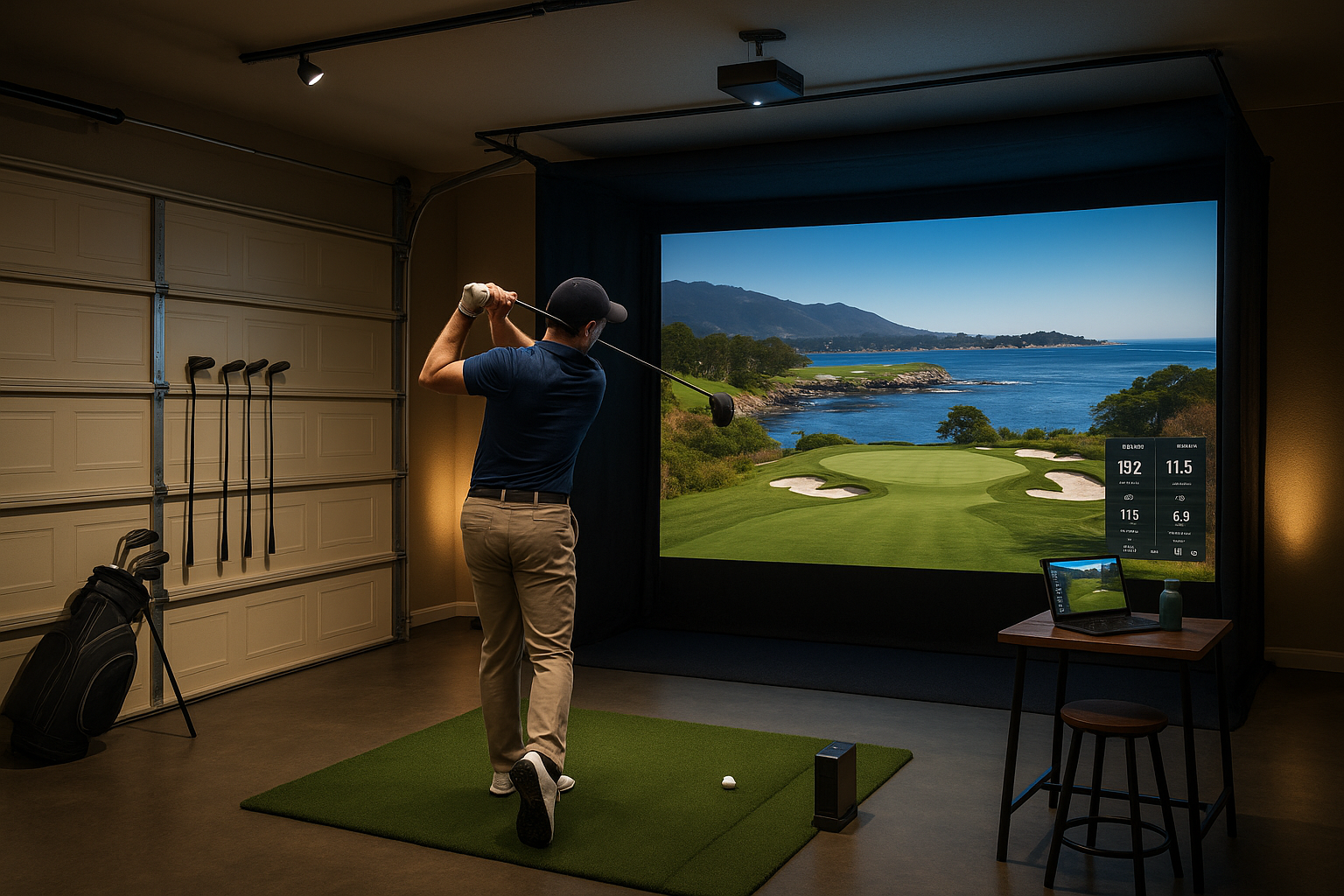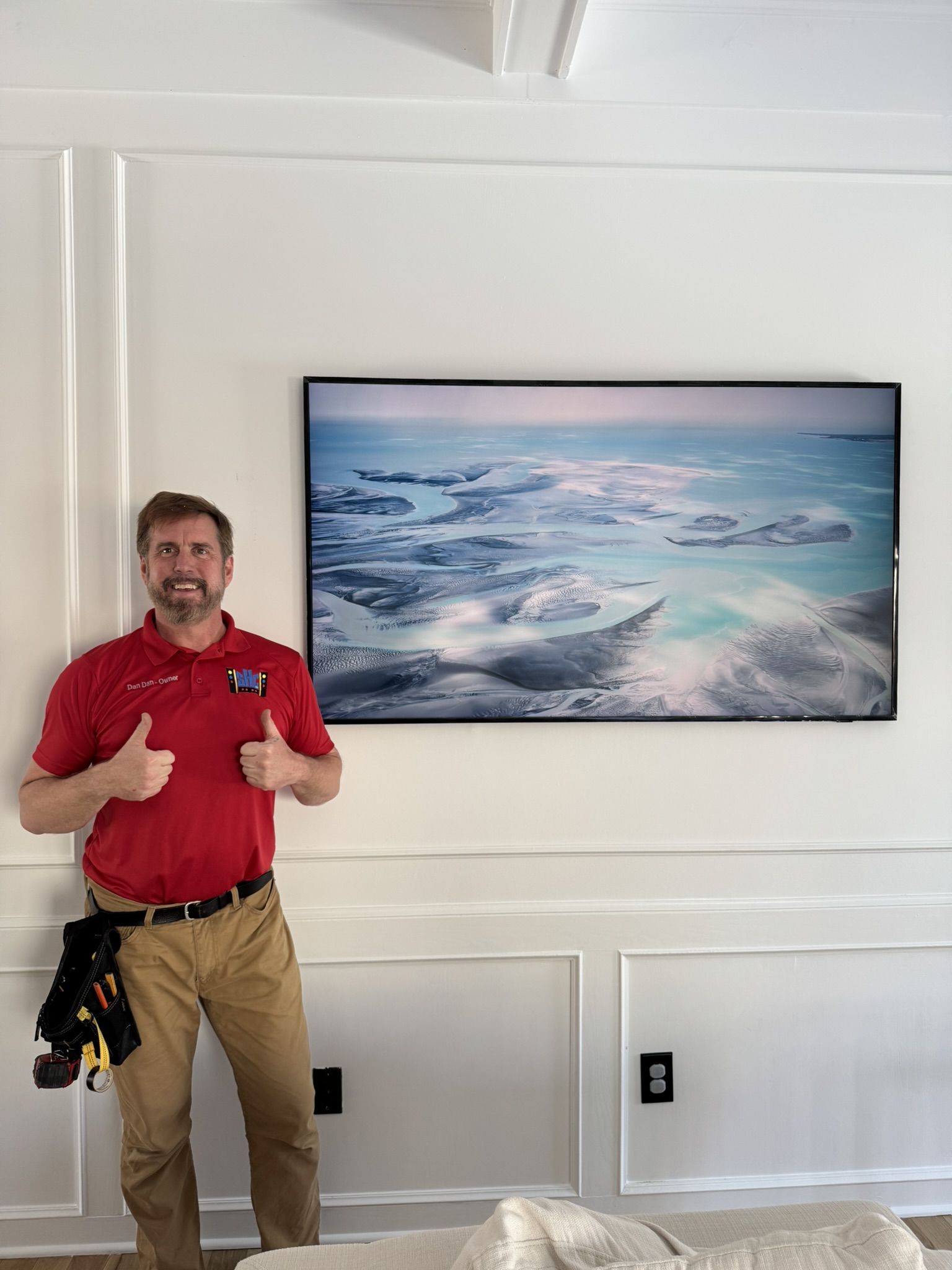
Is a Home Golf Simulator Worth It? Let’s Break Down the Real Costs
Thinking About Bringing the Fairway to Your Garage?
Be honest—have you found yourself eyeing those sleek home golf simulators popping up on YouTube or TikTok? You’re not alone. With tech getting better and prices becoming more competitive, turning your garage or basement into a virtual driving range is more doable than ever.
But here’s the million-dollar question (don’t worry—it won’t actually cost that much): What’s it really cost to set up a golf simulator at home?
Whether you’re planning a garage golf setup, turning your basement into a swing studio, or looking for a full-blown golf simulator installation in KC, we’ll break it all down—piece by piece.
What’s Included in a Home Golf Simulator Setup?
A solid golf simulator isn’t just a projector and a mat. There are a few core components every setup needs—plus some optional upgrades if you want to go full PGA Tour mode.
The must-haves
- Launch Monitor: Tracks your ball speed, spin, launch angle, and more. Brands like SkyTrak and Garmin offer mid-tier options, while TrackMan and Foresight are high-end.
- Simulator Software: This is where the “virtual course” magic happens. Packages like E6 Connect and TGC 2019 are popular.
- Impact Screen & Enclosure: Catches your shots and displays the game. You’ll need a frame and screen, or an all-in-one enclosure system.
- Projector: You’ll want short-throw to minimize shadows. Resolution matters—go for HD or higher.
- Hitting Mat: Simulates turf and protects your floor. Some premium ones even let you practice rough or bunker shots.
- Computer or Tablet: Powers the software and connects your monitor. You’ll need something strong enough to run simulation graphics smoothly.
The nice-to-haves
- Swing cameras: Great for training and fixing that slice you’ve been ignoring.
- Surround sound: Yep, some people install surround audio to feel the crowd roar at Augusta.
- Lighting & decor: LED track lighting, turf floors, or a putting green can make it feel pro-grade.
Bottom line: you can keep it simple, or go all out. The range is wide—and so is the price tag.
How Much Does a Basic Setup Actually Cost?
Good news—it’s not just for rich retirees anymore
Let’s break it down by tier. These are average ballpark figures, assuming you’re handling the basic install yourself (like most DIY-friendly homeowners).
Entry-level systems ($1,500 – $5,000)
- Launch monitor: SkyTrak ($2,000)
- Software: E6 Connect Basic ($300/year)
- Mat & net: Around $500 – $700 total
- Optional screen/projector: Add $800 – $1,200 if you don’t want to rely on a tablet
This is perfect for folks testing the waters or making use of a smaller space—especially those planning a garage golf setup.
Mid-range setups ($5,000 – $12,000)
- Launch monitor: Garmin R10 or Flightscope Mevo+ ($500 – $2,000)
- Mat: Upgraded hitting surface ($800+)
- Enclosure with screen: $2,000+
- Short-throw HD projector: $900 – $1,500
- Software upgrades: Premium courses, multi-player, or analysis tools
Great balance of quality and price. This is the sweet spot for most families, weekend warriors, and those getting serious about home practice.
High-end builds ($15,000 – $50,000+)
- Launch monitor: TrackMan, Foresight GCQuad ($12,000+ alone)
- Custom enclosure & frame: Designed to fit your space perfectly
- Multi-cam swing analysis: Think Golf Channel studio vibes
- Dedicated PC + high-end software bundle: Can add $2,000+
- Custom flooring, LED lighting, seating: If you’re going full indoor golf lounge
Yes, this level of investment is serious—but some clients are converting basements, game rooms, or even barns into full golf suites.
How Space Affects Your Budget
Not every room is created equal
Most golf simulator installation KC projects we’ve done start with one key question: “Do I have enough room?”
Here’s what you’ll generally need for dimensions:
- Ceiling height: 9 to 10 feet is ideal (especially if you’re tall or swinging driver)
- Width: Minimum 10 feet, 15+ for comfort
- Depth: 16 to 20 feet gives you full swing + projector clearance
Garage setups work surprisingly well
In fact, garage golf setup projects are among the most common—and most budget-friendly. They often already have high ceilings and fewer space conflicts.
Want a built-in solution?
If you’re integrating a golf simulator into a finished room, the costs rise. That’s due to soundproofing, aesthetics, and tech routing. We’ve helped clients convert:
- Bonus rooms over garages
- Home theaters with dual purpose
- Walkout basements with bar/lounge areas
With the right planning, almost any space can work—it just affects your installation cost.
Common Mistakes That Raise Costs Fast
Let’s keep you from blowing your budget
We’ve seen dozens of installs—and we’ve seen plenty of mistakes that cost more in the long run. Here’s what to avoid:
- Skimping on mat quality: Cheap mats lead to wrist strain and torn turf. Get one that simulates real fairway feel.
- Bad lighting placement: Too much glare or shadow ruins immersion—and your swing vision.
- Underpowered projectors: Blurry graphics kill the realism. Aim for 1080p at minimum.
- Overestimating space: You might think you’ll fit a full enclosure in your den… until the driver clips the ceiling.
“The #1 regret homeowners tell us? They wish they’d planned the space better before buying equipment.”
Want to skip those mistakes? We can help with that.
Is a Home Golf Simulator Actually Worth the Investment?
It’s not just about saving trips to the range
Sure, there’s upfront cost—but let’s talk value:
- Golf year-round: Rain, snow, or midnight? Doesn’t matter.
- Track your improvement: Launch data + swing analysis = faster progress
- Host events: Multiplayer modes let you play Pebble Beach with friends over drinks
- Boost resale value: For high-end homes, golf simulators are becoming a real selling point
Statista reports indoor golf simulator sales in the U.S. grew 38% between 2020 and 2023—and they’re still rising. People are investing in home recreation like never before.
If you play at least once a week, a home simulator often pays for itself in 2-3 years compared to memberships, lessons, and driving range fees.
Let’s Design Your Dream Golf Setup
It’s easier than you think—and we’ll handle the hard stuff
At SmartHome Connect, we specialize in golf simulator installation in KC and surrounding areas. Whether you’re looking for the best home golf simulator on the market or want help transforming a garage into your personal driving range, we’ve got the tools—and the team—to make it happen.
We handle everything from layout planning to wiring, mounting, calibration, and setup. You swing. We sweat the details.
Curious what it would look like in your space? Let’s chat about your goals and get you a quote with zero pressure.
Your dream golf setup is closer than you think. The fairway’s calling—you just need the right tools to bring it home.


